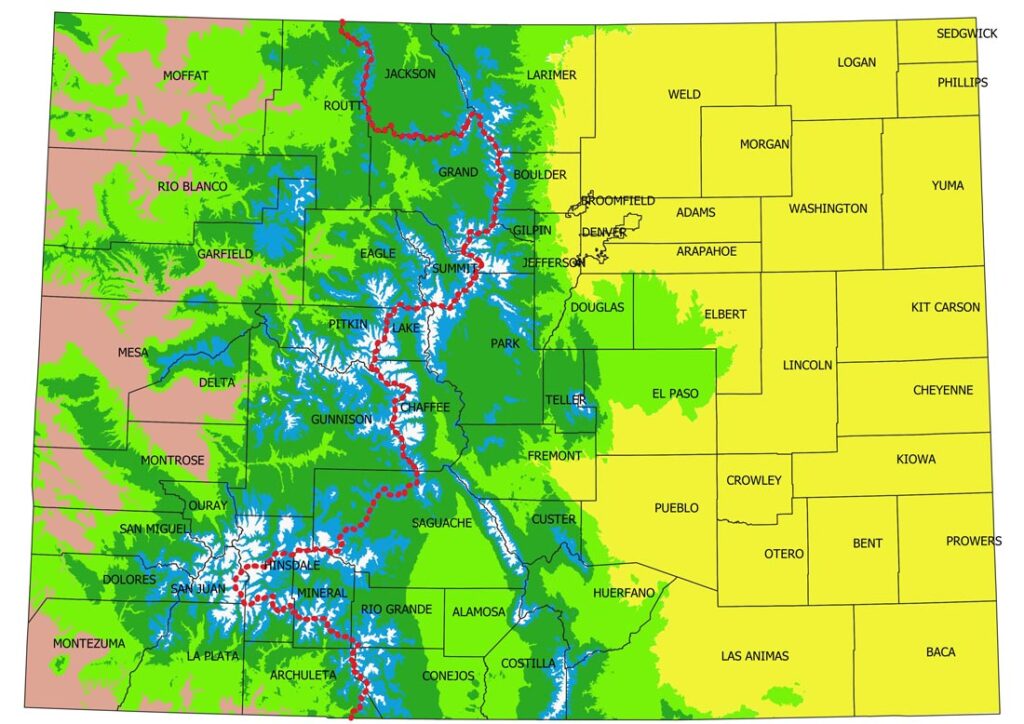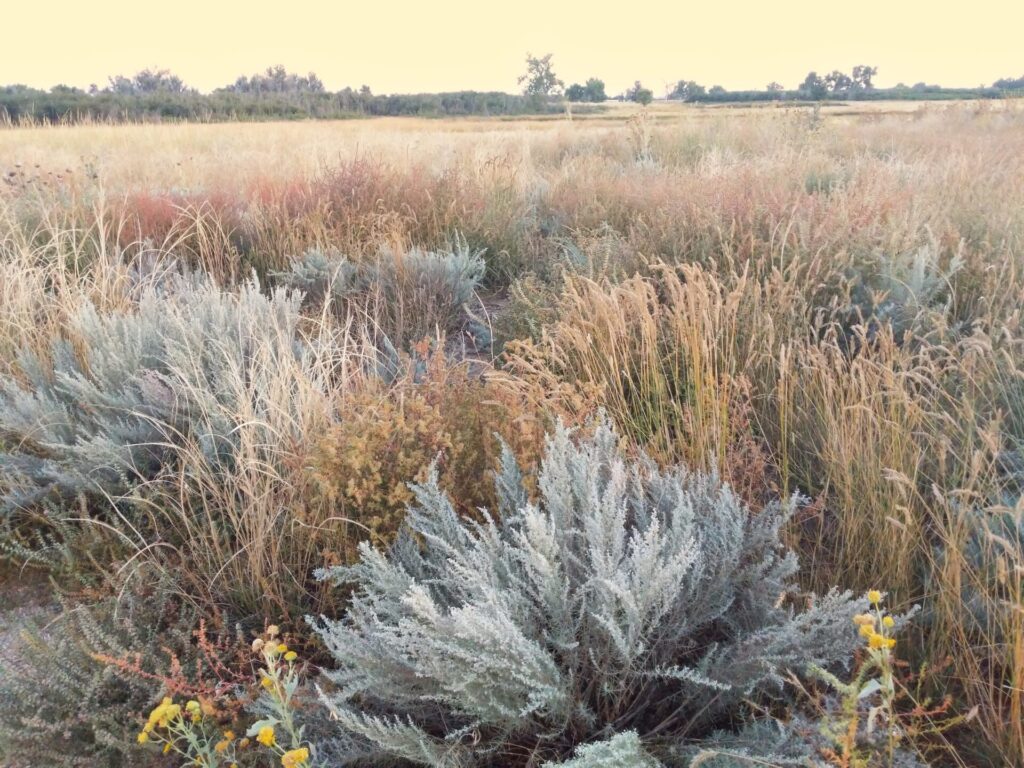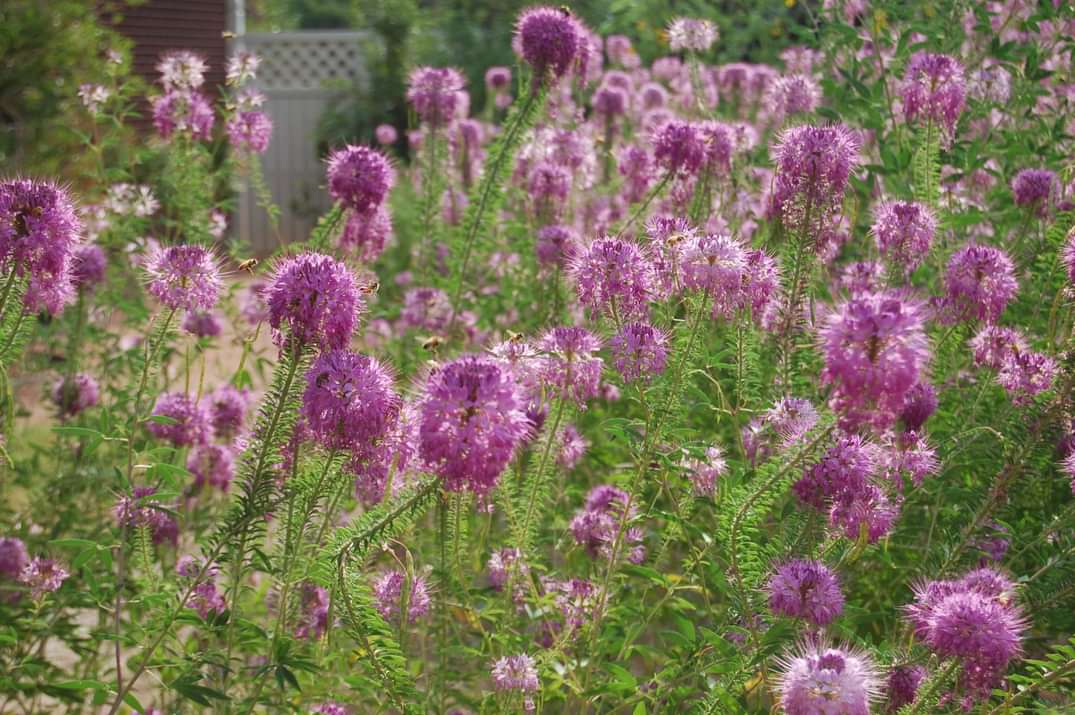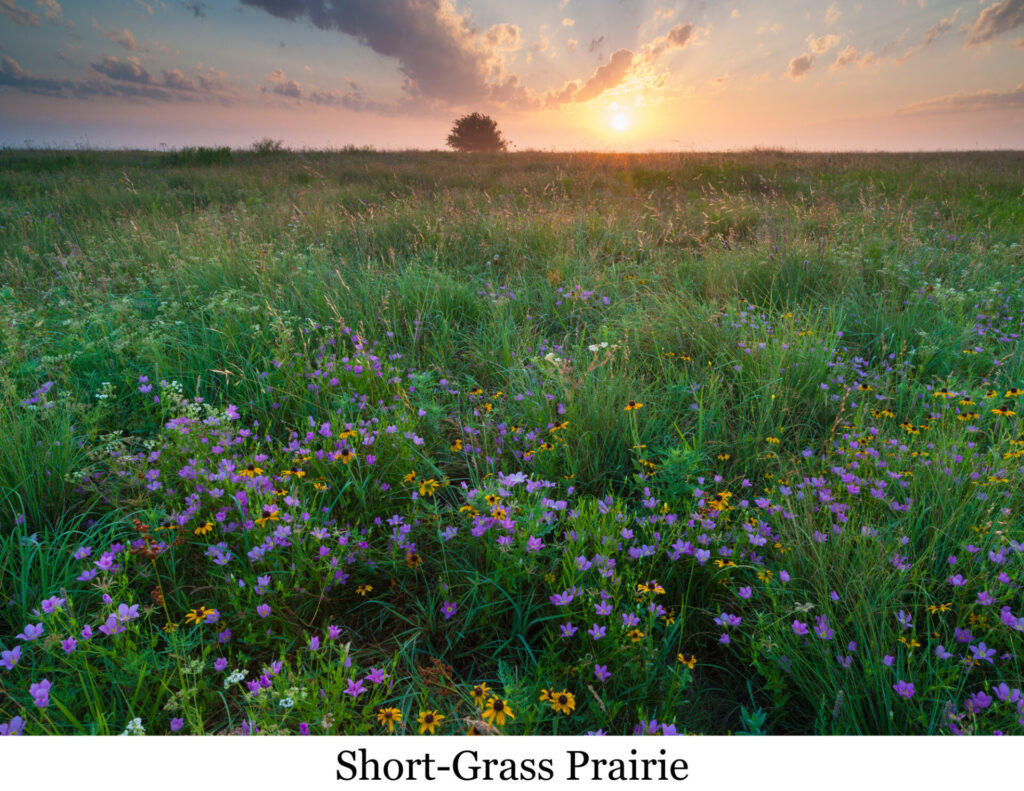
The Denver area is part of an eco-region called the High Plains. Before colonization, Denver was short-grass prairie that tapered into the foothills. Our neighborhoods were blanketed in wildflowers and short colorful grasses (especially blue grama and buffalo grass), with cottonwoods and berry bushes growing along the streamsides.
Restoring native habitat here means bringing back prairie and foothills plants that support countless local animals and insects.

The Denver area was also the land of Cheyenne, Ute, Arapaho, Comanche, and Sioux tribes. At least 48 other tribal nations occupied this land in the last 500 years. They cultivated relationships with the native plants that we use in gardens today, and used them in food, tea, medicine, and other cultural practices.
Native plants and native Americans are still here in the Denver area, and can still teach us about how to work with the land. But a lot of knowledge, diversity, health, and beauty has been destroyed. About 50% of U.S. short-grass prairie has been converted to agriculture or urban development in a way that supports almost no non-human life.

Our task now, as people who live on Colorado land, is to learn how to be in healthy relationship with the ecosystem. This means more than just enjoying Colorado’s beauty; it means getting to know our local ecosystem, and learning to be a supportive friend or partner to it. It means waking up to our responsibility and capacity to co-exist with the prairie and all of the rich life that the natural ecosystem supports.

Over time, getting to know the land helps us build a lived understanding of our place and our power. When you plant a milkweed flower in your yard and then watch a monarch butterfly lay her eggs on it, you become a meaningful contributor to your ecosystem, as well as a participant in a biological drama.
Your street was once filled with wildflowers, colorful grasses, songbirds, and butterflies. What would it be like to restore that beauty and abundance to your neighborhood? How does your street feel right now in comparison?


